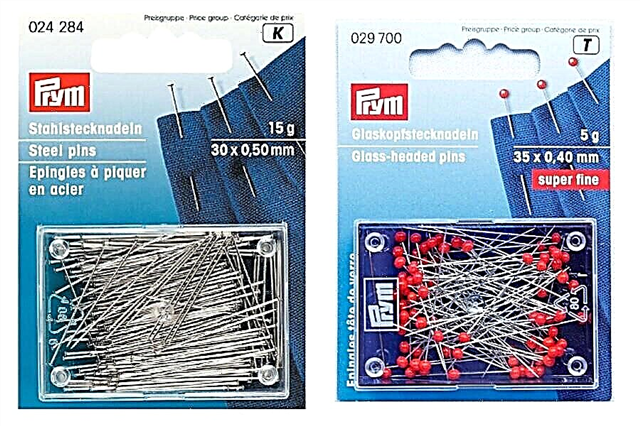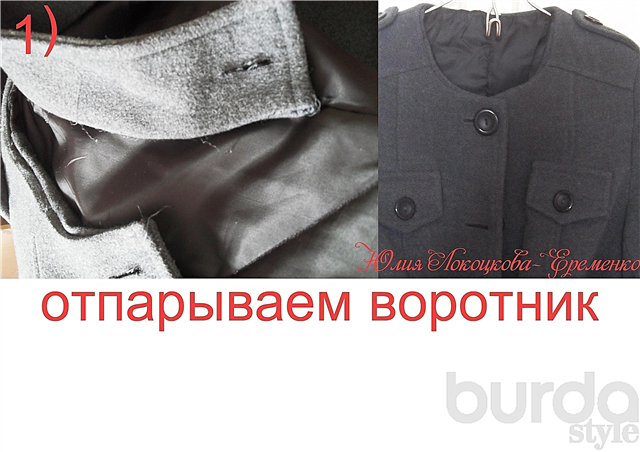Without this set of sewing tools and accessories, achieving a professional result is extremely difficult!
If everything is clear with the sewing machine and overlock, one way or another, it’s understandable, then the rest of the sewing tools necessary for high-quality work are not always obvious, especially for beginners
1. Cutting scissors

Your tool is number one and the first assistant and ally in all sewing adventures! The choice of such an important tool should be approached deliberately and not to save.
Tailor cutting scissors should be sharp and comfortable to lie in the hand. The main thing to remember: never cut them with anything other than fabric, and in no case try to sharpen the dull scissors yourself (there are specialized workshops for this)!
2. Circular cutting knife

A round knife has both its indisputable advantages and a number of disadvantages. Let's start with the pros!
Unlike ordinary scissors, such a knife cuts several layers of fabric at the same time without displacement, which is indispensable for cutting small rectangular parts. In addition, the round cutter is very lightweight, does not strain your hand and is perfect for left-handed people. Also, do not forget that it is much sharper than ordinary scissors, and replacing the blade takes a matter of seconds.
As for the minuses, it should be borne in mind that it is difficult to cut curved lines with a round knife, and when cutting intersecting you will probably grab a little more fabric than you would like. In addition, working with such a cutter requires a set of rulers and a special rug is required!
3. Zigzag scissors
 Photo: pinterest
Photo: pinterest A purchase that seems optional, but that you really never regret. With the help of scissors, zagzag processing of slices turns into a much more pleasant and simple task, and the level of stress from working with easily crumbling fabrics is reduced tenfold!
4. Scissors for thread trimming

It seems that you can cut random strings with any scissors at hand, but professionals do not allow this. For these purposes, always have convenient small and sharp scissors on hand.
5. Spreader

If you are serious about the art of sewing and really want to improve in it, the spreader should be your friend, because one of the main skills of any professional is the ability to dissolve something that does not meet the standards without much thought and regret. Even if you have to do it the third time in a row.
How to open seams
6. Set of pins

The pins are different, for example, pins for silk and satin or pins for delicate fabrics and your task is to sensibly evaluate which ones you need. You should not rely on universal tailor's pins, because the wrong choice can ruin your fabric and mood.
Tailor pins: types of pins for sewing
7. Centimeter tape

The centimeter tape should be soft and flexible so that you can take measurements with millimeter accuracy.
8. Ruler for stocks

You will adore her, ready to vouch. This little helper will make your life happier, and the scope of its application will make many sewing operations much easier!
9. Water-soluble marker tailor's chalk

Regardless of how and from which you make patterns (someone prefers tracing paper, someone graph paper, and someone budget film), you need reliable helpers for marking. A high-quality marker or a convenient crayon will perfectly cope with this task.
10. A set of needles for hand sewing

The right sewing needles will make manual sewing operations faster and easier, so don’t be too lazy to figure out which needles and why. It is not so difficult to do this with our detailed guide!
Hand sewing needles: main types and purpose
11. Tailor's ham and suture roller
 Photo: tillyandthebuttons
Photo: tillyandthebuttons If you still successfully dispense with these devices, then it's time to move to a new level! Tailor's ham is used for the WTO darts, embossed seams, sleeve sleeves, collars and other curved seams. A tailor's roller allows you to gently smooth the seams of the sleeves, narrow trousers. In addition, they prevent the appearance of allowance prints on the front of the product during ironing. You must admit that such talents are needed in the clothing industry!
The good news is that you can sew both of them yourself, thanks to our step-by-step master class!
How to make tailor's ham and suture roller



